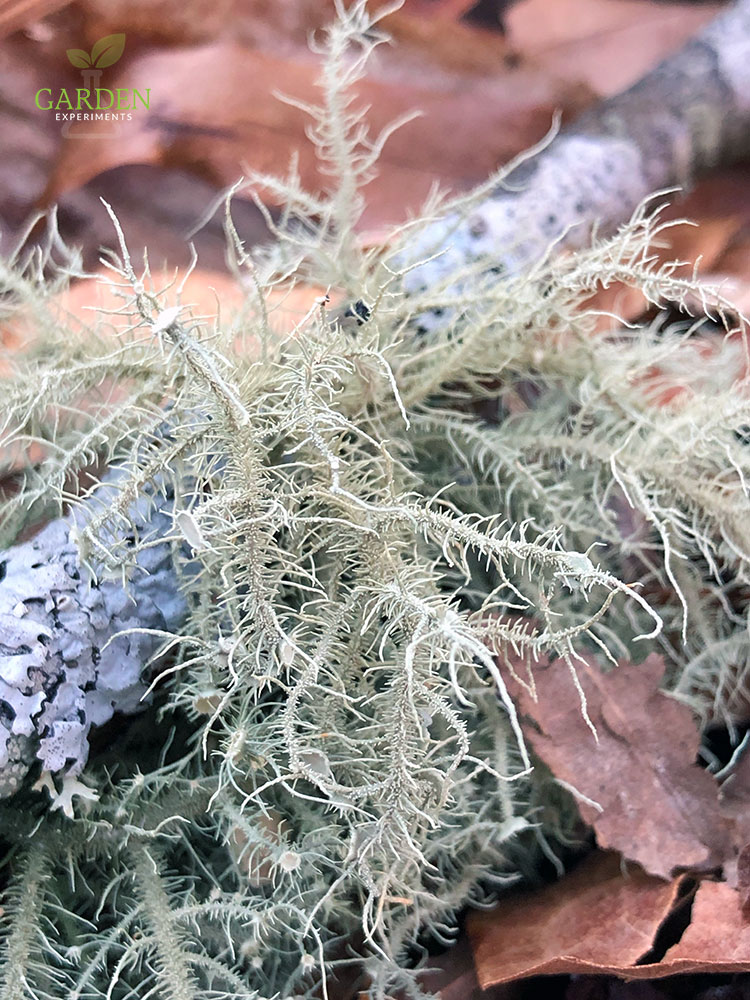In the fall and winter, I like to go lichen-hunting. The trees have lost their leaves and there isn’t much undergrowth, so it’s a lot easier to spot these frilly, hairy, fuzzy, and crusty organisms.
There are so many shapes, textures, and colors of lichens to look at, it can take me hours to get down a trail.
I once had a bicyclist whizz past me on a trail, only to come back a few seconds later, stop his bike, and say, “I have to know, what are you doing?”
I guess it was bewildering to see someone spending so much time looking at something on the ground. You should have seen the face he made when I told him what I was looking at, LOL. He’s obviously not a science-nature geek like me.
Where to Find Lichens
Lichens can be found growing on rocks, on branches and bark, and even on the sides of buildings. They cover about 7% of the earth’s surface – so if you look closely, you can find them almost everywhere.
What is a Lichen Made Of?
They are composed of a basidiomycetous fungi (yeast), an ascomycetous fungi, and a green alga, these three organisms work together to live in conditions that many living things could not stand. The alga provides food through photosynthesis, the fungi provide minerals, water, and shelter.
It’s a symbiotic relationship! By themselves, none of these organisms could survive where they can together, as lichens.
So not only are they really cool looking, but they are also amazing in how they function too. (Some of them can live to be 10,000 years old – fun fact!)
Beauty is in the eye of the beholder
There is something I find fascinating about the alien structures of lichens. Here are some of my favorites.
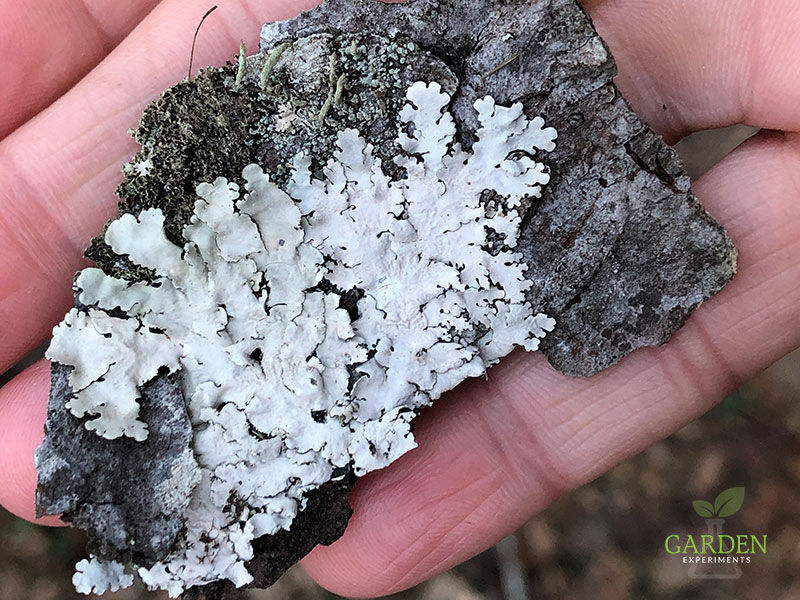
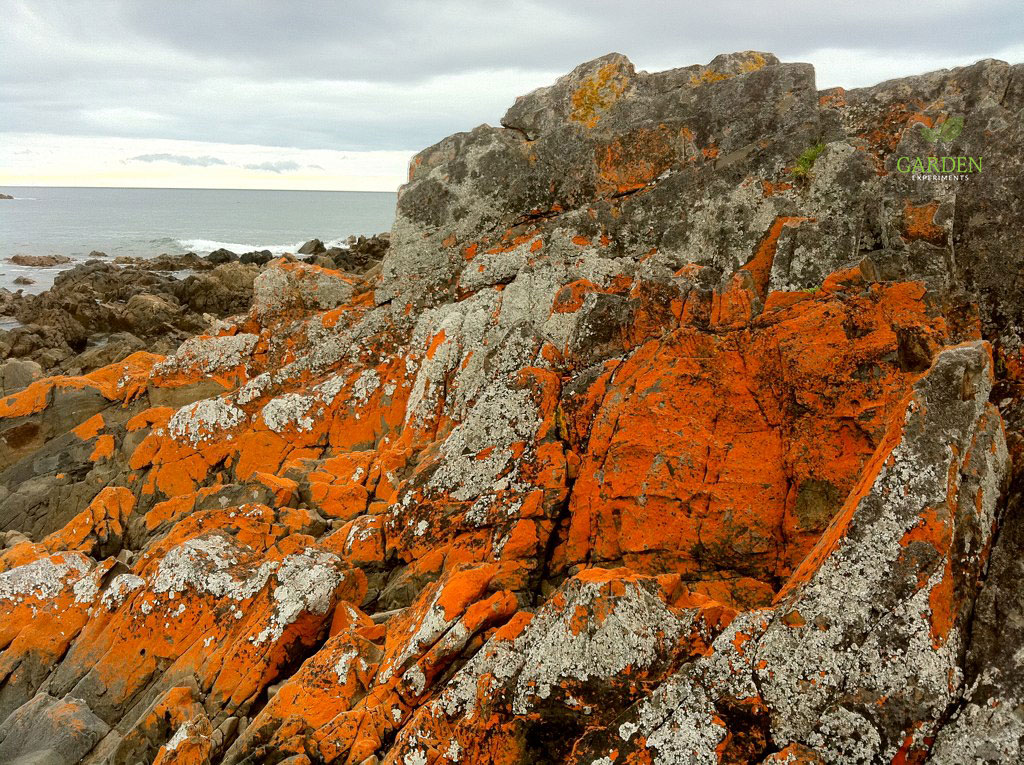
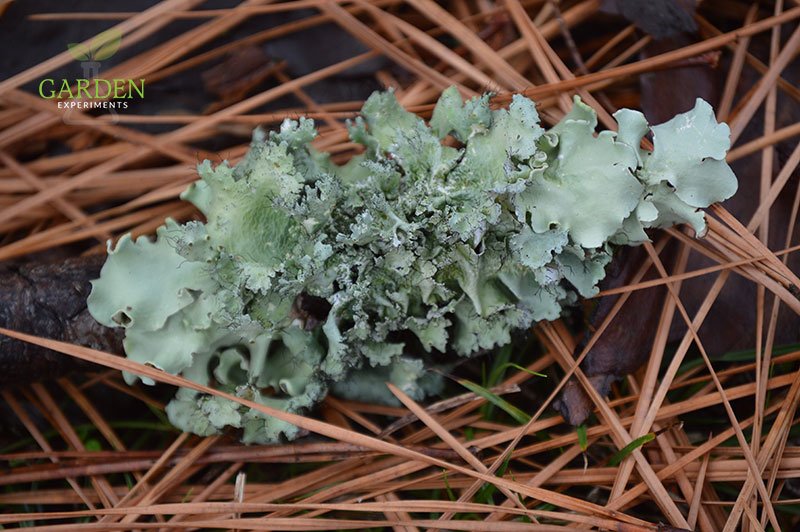
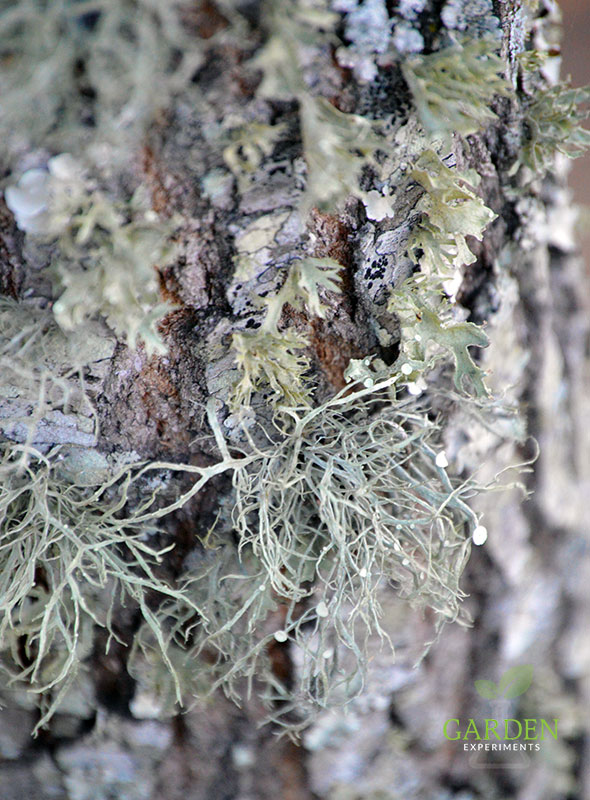
Lichen Resources and More Info
These are some of the articles I used as resources for this article and great places for you to read more about lichens:
- https://www.theatlantic.com/science/archive/2016/07/how-a-guy-from-a-montana-trailer-park-upturned-150-years-of-biology/491702/
- http://science.sciencemag.org/content/353/6298/488
- https://www.jstor.org/stable/3238526?seq=3#metadata_info_tab_contents
- https://www.the-scientist.com/news-opinion/not-one–not-two–but-three-fungi-present-in-lichen-65333

